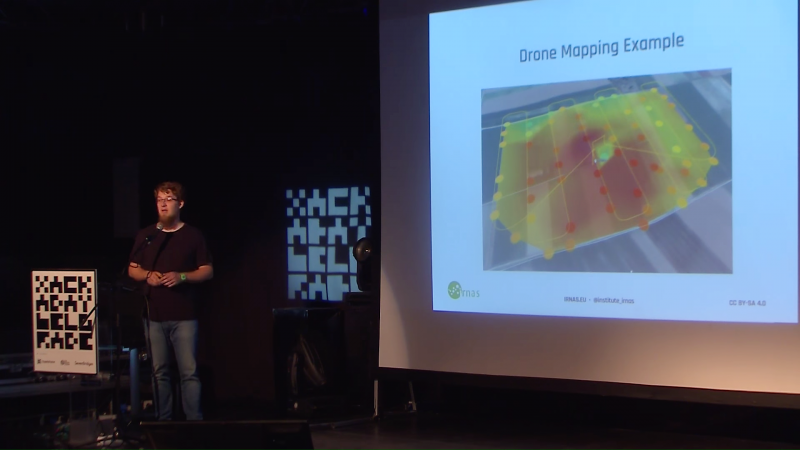Ecology is a strange discipline. At its most basic, it’s the study of how living things interact with their environment. It doesn’t so much seek to explain how life works, but rather how lives work together. A guiding principle of ecology is that life finds a way to exploit niches, subregions within the larger world with a particular mix of resources and challenges. It’s actually all quite fascinating.
But what does ecology have to do with Luka Mustafa’s talk at the 2018 Hackaday Belgrade Conference? Everything, as it turns out, and not just because Luka and his colleagues put IoT tools on animals and in their environments to measure and monitor them. It’s also that Luka has found a fascinating niche of his own to exploit, one on the edge of technology and ecology. As CEO of Institute IRNAS, a non-profit technology development group in Slovenia, Luka has leveraged his MEng degree, background in ham radio, and interest in LoRaWAN and other wide-area radio networks to explore ecological niches in ways that would have been unthinkable even 10 years ago, let alone in the days when animal tracking was limited by bulky radio collars.
Internet of Turtles
The first part of Luka’s talk concentrated on “Animals as Sensors,” which seeks to turn individual animals into IoT-connected probes of their environment. To study reef ecology and aid in the conservation of green turtles, Luka and his colleagues developed a “TurtleCam” package that can be glued to the back of animals while they are laying their eggs on the beach. That package has a Raspberry Pi Zero and a PiCam along with a custom module to manage power and LoRa connections, all housed in a case that’s good to 500 meters depth. The turtles head back out to sea after laying their eggs, shooting gigabytes of video of their environment before returning to the nest in about 14 days. Once ashore, the pack connects to a LoRaWAN gateway on the beach and lets researchers know it’s time to track down the turtle, swap out the old pack for a fresh one, and download the data.
[wpvideo 6nRnYCE9]
A similar system is used to study land animals. To keep an eye on the behaviors of animals in Peruvian tropical forests, Luka’s team developed fixed camera units that are installed high up in the canopy. Image analysis is used to detect motion and report to a LoRaWAN gateway installed above the treetops. Another fixed camera system watches streams for signs of drought that could strand and kill endangered fish in Madagascar and warms conservationists when to spring into action. And penguin colonies in Antartica are studied using a similar camera system, this time with Iridium satellite connectivity and solar panels for long-duration studies in brutal conditions.
Drone Mapped Networks
As cool as these IoT devices are, they’re only as good as their network, and IRNAS has tools for optimizing that too. They’ve developed their own LoRaWAN gateways, as well a drone-based system for mapping network coverage quickly and easily over wide areas and in inaccessible locations. Rather than pay a climber to place a sensor 80 meters up a tree only to find it can’t reach the gateway, their TTNMapper rides on a DJI drone to take care of the initial survey automatically. Research and conservation budgets only go so far, after all, and few groups can afford false starts. IRNAS mapping tools can stretch the funds.
Luka covered a lot of other ground in his talk, like real-time modeling of antenna radiation patterns and how to optimize gateway site selection. It’s really interesting stuff, and well worth watching. We were also impressed by the fact that everything they release is open-source, so if you have a hankering to watch the world from a turtle’s point of view, check it out. The action is always at the edges of ecosystems, and Luka has found an interesting niche at the edge of IoT and ecology.
Keep your eye on Hackaday as we continue to publish talks from the 2018 Hackaday Belgrade Conference. Don’t miss our biggest conference of the year, tickets for the Hackaday Superconference are now available.

















Solvenia?
It’s just across the river from Slovenia. Don’t you know your goegraphy?
Thanks for catching that. FTFY.
It “Mustafa” beena gooda presentation!
B^)